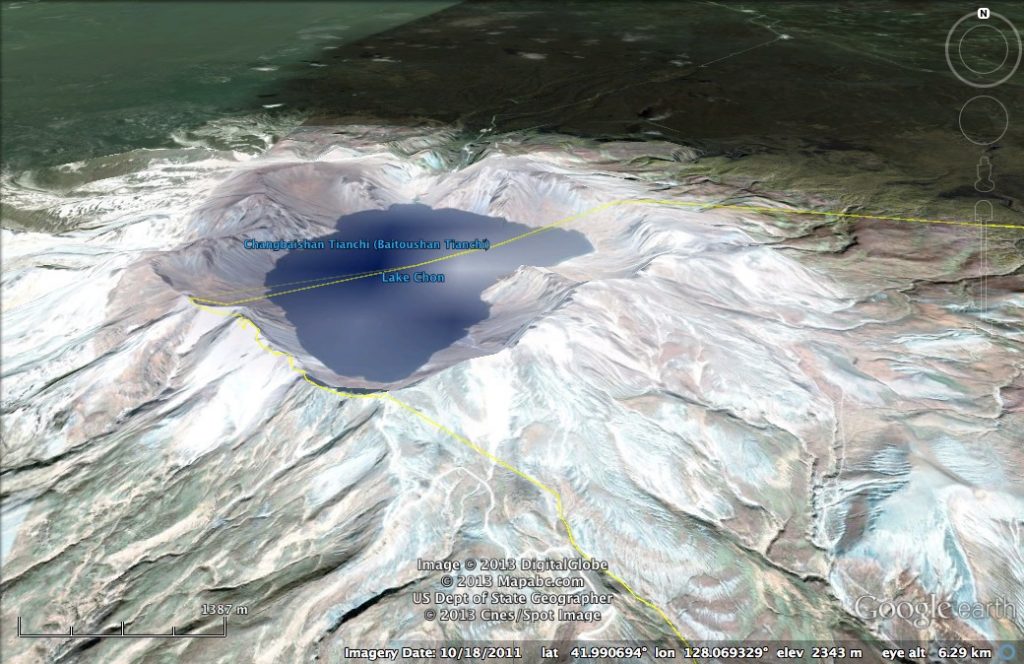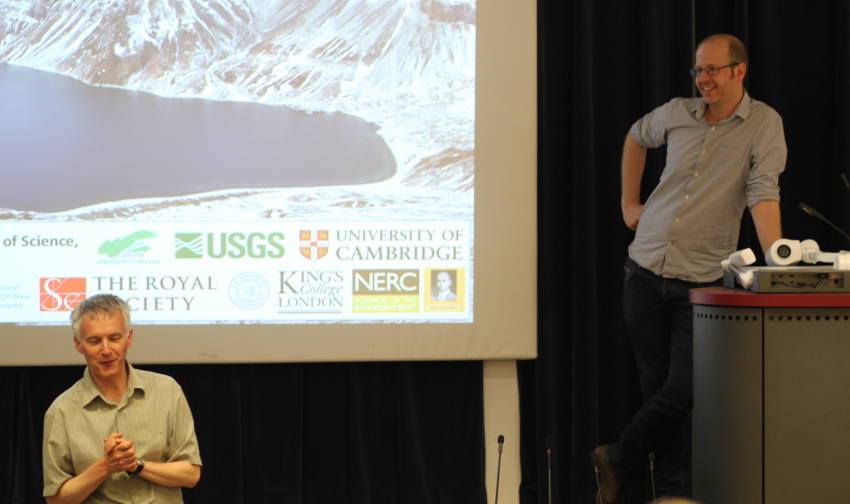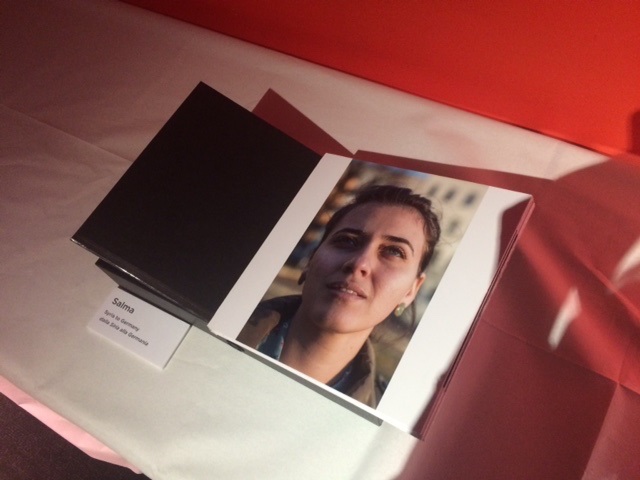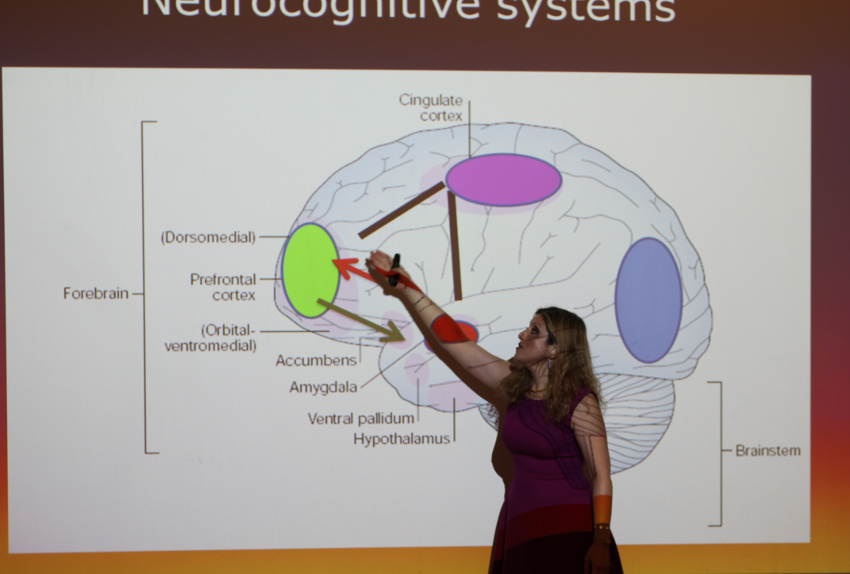Neill Marshall, undergraduate Geology student, discusses a recent event on diplomacy in scientific research, as part of Birkbeck’s 2018 Science Week.

Studying Earth Sciences offers unique opportunities to travel to remote and exciting places around the world, and this has certainly been the case for geophysicist Dr James Hammond. As part of the #BBKScienceWeek 2018 talks, Dr Hammond presented his work on Mount Paektu, a remote volcano straddling the North Korean and Chinese border. He spoke of the unique experience of studying a poorly understood active volcano capable of catastrophic eruptions that has a significant cultural importance to all Koreans.
The cultural significance of Mount Paektu
Mount Paektu is the highest point on the Korean peninsula with importance to all Koreans as a strong-hold against the Japanese invasion. Dr Hammond described how it is the symbolic birthplace of the communist revolution and Kim Jong-il was thought to have been born there. Now many North Koreans go on a pilgrimage to Mount Paektu to rejoice in their leader’s birthplace. Dr Hammond showed videos of performances of the mass gymnastics at the Arirang Festival depicting Mount Paektu and of school children singing songs about the volcano.
Geopolitics and science diplomacy
Studying a volcano in a politically volatile region rarely visited presented Dr Hammond and his colleagues with logistical and diplomatic challenges. Following the increased activity at Mount Paektu, North Korea called out for collaboration with world scientists. It took two years of negotiation between the UK, US and North Korean governments with involvement from the Royal Society and the AAAS before a joint North Korean-UK scientific expedition could be mounted.
Dr Hammond and his colleagues became the first western scientists to visit the Mount Paektu volcano observatory. Dr Hammond described how the project ultimately enabled scientific communication with North Korean scientists allowing knowledge to be shared between this politically isolated nation and the wider scientific community outside North Korea.

Scientific interest in Mount Paektu
Dr Hammond gave a brief background on the eruptive power of Mount Paektu describing the last large eruption in 946AD as one of the biggest eruptions in human history. He described colossal eruption, bigger than Krakatoa in 1883 and on a similar scale to the Tambora eruption in 1815, with deadly lahar and pyroclastic flow deposits in the region.
Despite the scale of the 946AD eruption little is known about the volcano. It does not lie on a tectonic plate boundary unlike the vast amount of volcanoes on Earth.
Recent activity has been observed at the volcano in the form of earthquakes, increased gas emissions and deformation of the volcano. These are key indicators that the magmatic plumbing system is recharging.
The deployment of seismometers in a linear array was an attempt to use seismic waves to image the Earth’s crust near to Mt Paektu. He explained the processes involved in deployment; meeting local farmers, dignitaries and North Korean scientists; dealing with mountain weather; and travelling in this remote region.

Dr Hammond explained how seismic waves can be utilised to image the Earth in a similar way to a CT scan of a human body. From this method of imaging, a low seismic velocity zone was found 7km beneath the surface was found. Combined with other analysis of seismic velocities the results suggest the presence of fluid (likely magma) in the crust beneath the volcano.
However, more research needs to be done to fully understand the volcano with the key question of why this volcano is present in this region is still yet to be answered. Dr Hammond is planning an additional wider deployment of seismometers (potentially in 2019) to try and answer this question.



 So, is there a relationship between cognitive vulnerability and emotional vulnerability?
So, is there a relationship between cognitive vulnerability and emotional vulnerability? 